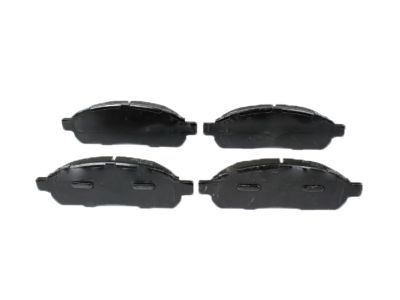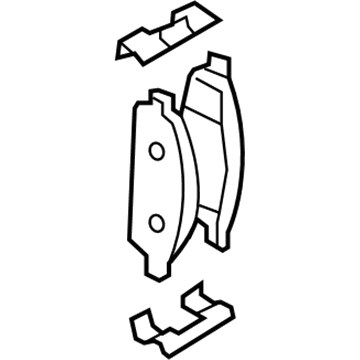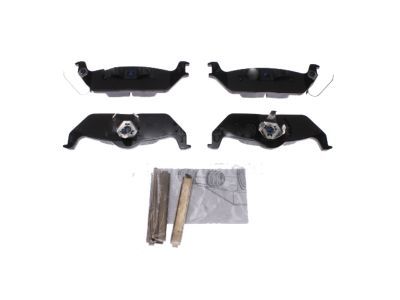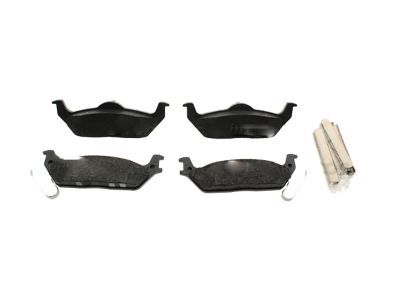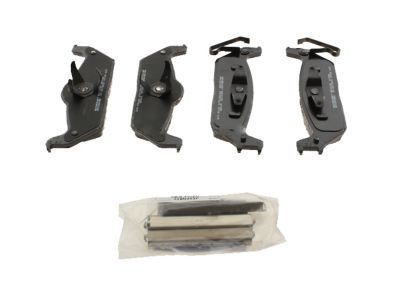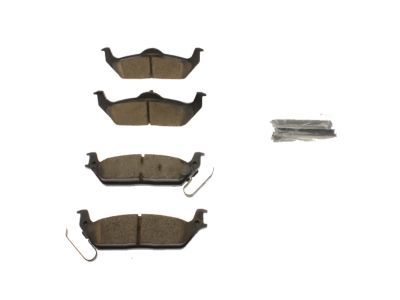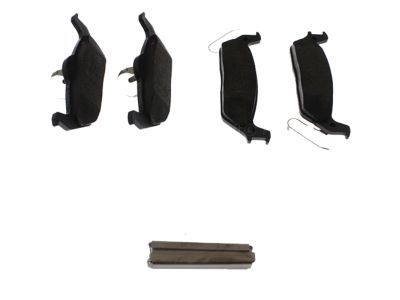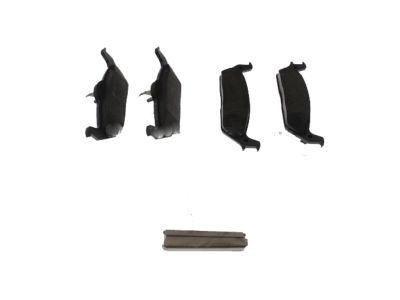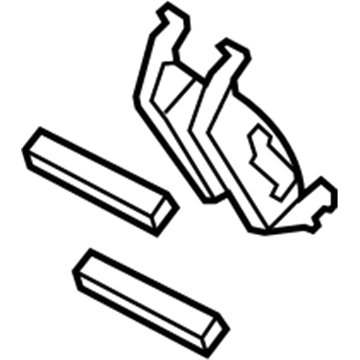FordParts
My Garage
My Account
Cart
OEM 2006 Ford F-150 Brake Pads
Disc Brake Pad Set- Select Vehicle by Model
- Select Vehicle by VIN
Select Vehicle by Model
orMake
Model
Year
Select Vehicle by VIN
For the most accurate results, select vehicle by your VIN (Vehicle Identification Number).
2 Brake Pads found

2006 Ford F-150 Brake Pads, Front Part Number: 4U2Z-2V001-CA
$45.07 MSRP: $66.65You Save: $21.58 (33%)Product Specifications- Other Name: Pad; Disc Brake Pad Set, Front; Front Pads; Disc Brake Pad Set
- Manufacturer Note: Ford Retail Spec
- Position: Front
- Replaces: 4L3Z-2001-AD, 6L3Z-2001-A, BRF-1395, 5L3Z-2001-A, BRF-1392, BRF-1083, 9L3Z-2001-A
- Base No.: 2001
- Item Weight: 8.10 Pounds
- Item Dimensions: 10.4 x 8.1 x 6.2 inches
- Condition: New
- Fitment Type: Direct Replacement
- SKU: 4U2Z-2V001-CA
- Warranty: This genuine part is guaranteed by Ford's factory warranty.

2006 Ford F-150 Brake Pads, Rear Part Number: AU2Z-2V200-A
$46.59 MSRP: $66.65You Save: $20.06 (31%)Product Specifications- Other Name: Pad - Brake; Disc Brake Pad Set, Rear; Rear Pads
- Position: Rear
- Replaces: 4U2Z-2V200-A, 6L3Z-2200-AB, AL3Z-2200-A, BRF-1012-B, BRF-1012-A, BL3Z-2200-B, BRF-1425, 6L3Z-2200-CD, BR-1012-C, BR-1012-B, BRF-1012-C, AL3Z-2V200-A, 8L3Z-2200-A, BL3Z-2200-C
- Item Weight: 3.10 Pounds
- Item Dimensions: 8.8 x 5.4 x 2.5 inches
- Condition: New
- Fitment Type: Direct Replacement
- SKU: AU2Z-2V200-A
- Warranty: This genuine part is guaranteed by Ford's factory warranty.
2006 Ford F-150 Brake Pads
If you're seeking quality and affordability, look no further than our extensive inventory of genuine 2006 Ford F-150 Brake Pads available at FordPartsDeal.com. You can confidently purchase our OEM 2006 Ford F-150 Brake Pads as they are supported by the manufacturer's warranty and our hassle-free return policy, alongside the benefit of our fast delivery service.
2006 Ford F-150 Brake Pads Parts Q&A
- Q: How to service the front brake pads on 2006 Ford F-150?A: The service of front brake pads requires DOT 3 motor vehicle brake fluid which must be used exclusively since other fluids will destroy brake components and disable braking capacity with endangerment to personal safety. Exam the product label's warning information exactly and call emergency medical services in case needed. Ford/Motorcraft customers in the USA or Canada can reach 1-800-959-3673 for product information while a Material Safety Data Sheet (MSDS) file must be reviewed for the available products. The fluid has properties which damage paint and plastic surfaces thus requiring immediate cleaning with water. Begin by checking the brake fluid level in the brake master cylinder reservoir then subtract fluid until the point it reaches half full position. A professional must position the vehicle on a hoist with the brake caliper supported and not hanging from the brake flexible hose when in the neutral gear. Uninstall the two caliper bolts which enables you to set aside the brake caliper. First remove the brake pads alongside the two spring clips then put new brakes pads if needed because existing pads have exceeded their specified thickness against the metal backing plate while following install rules for complete axle sets. Check the brake pads for both wear levels and signs of grime. The brake disc pad kit will contain brake pads that fit both right-hand and left-hand sides when making an installation. Piston compression should happen inside its bore under boot and piston protection conditions before you add new spring clips and brake pads. Apply an appropriate device to push disc brake caliper pistons within the caliper bore and start bolt tightening from the bottom position. The brake caliper placement on the brake caliper anchor plate must be followed by two bolt installation at 74 Nm (55 lb-ft) torque.
